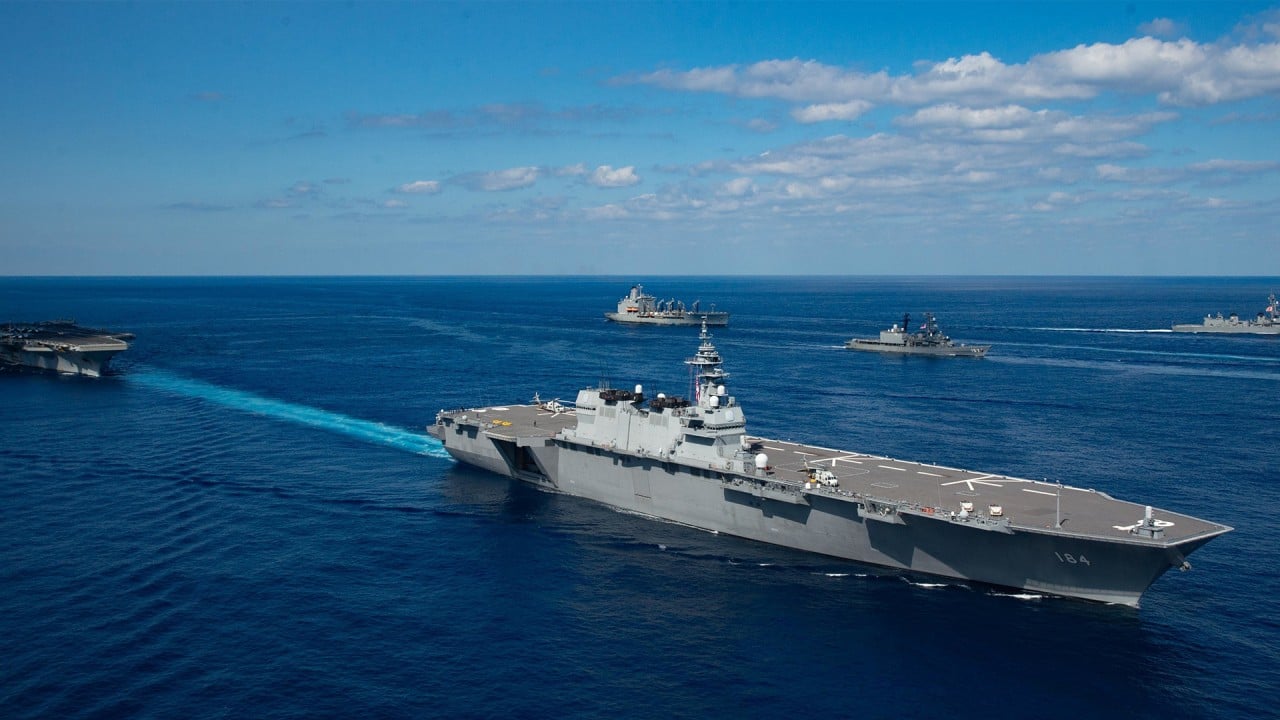
China, Japan risk miscalculation over Diaoyu Islands, analysts say
- Tokyo is increasing its military spending and development as both sides step up their presence in the East China Sea
- Observers say the escalating tensions over the uninhabited islands can be stabilised by agreeing to common procedures and more dialogue
‘Uncomfortable signal to China’: Japan raises Hong Kong in call to India
In the past year, 1,157 Chinese ships entered the contiguous zone of the islands, between 12 and 24 nautical miles, up more than 5 per cent on the previous 12 months and almost triple the number in 2012.
Also in February, the military website Janes reported the Japanese government had partnered with Mitsubishi Heavy Industries to develop hypersonic missile systems – capable of flying at five times the speed of sound – for the country’s Self-Defence Forces (SDF). Initial focus is on developing the missile’s scramjet engine.
At the same time, Japan’s defence budget for financial year 2021, which begins in April, is expected to grow for the ninth year in a row to around US$51 billion.

01:56
Diaoyu-Senkaku islands spat deepens as Japan warns China over coastguard ships in East China Sea
Timothy Heath, a defence analyst with US think tank Rand, said Japan’s actions should be viewed as reactions to recent moves by China to normalise its presence and operations near the disputed islands.
“The China Coast Guard’s clarification of its approved actions, including use of force, as well as continued Chinese measures to flood the area with Chinese fishing and other vessels put immense pressure on Japan,” he said.
“Japan could either passively watch China slowly consolidating control over the islands or take more dramatic action to bolster its control. But, given the stakes, Japan’s decision to shoulder its control of the islands is reasonable.”
Besides shoring up its own defence capabilities, Japan has also built up closer relationships with the US. The two countries extended their agreement on military base payments, according to a report by the Kyodo news agency last month.
Japan key to US plan to rally allies against China in Indo-Pacific: experts
Japan’s “asset protection” missions increased from 14 in 2019 to 25 last year, according to the defence ministry, with 21 of those involving the protection of US aircraft in joint training with Japan.
Japanese cooperation with the US was Tokyo’s only way to keep up, as China already had maritime and air superiority and the gap would probably only grow in the future, Heath said.
He added that the presence of so many ships and aircraft near the disputed islands raised the risk of miscalculation. “It is important for all sides to step up efforts to stabilise the situation by agreeing to common procedures and to continue dialogues on ways to reduce incidents at sea and ensure safety to all.”
Raffaello Pantucci, a senior associate fellow at the Royal United Services Institute in London, said the increase in military hardware and continued provocations expanded the space for potential incidents, “but Japan and China do continue to try and find a way to have a functioning relationship, recognising there are benefits in trade and having a more peaceful situation between their two powers”.

02:14
Japan-US hold joint military drills including cyberwarfare training as concerns about China grow
Grant Newsham, a senior research fellow at the Japan Forum for Strategic Studies, a conservative Japanese think tank, said any clash would only occur if China attacked. However, Song Zhongping, a Hong Kong-based military commentator, disagreed. “A clash would happen if the Japanese Self-Defence Forces or government officials landed on the islands first, or the Japanese side shot Chinese first.”
Confrontations over the disputed islands have flared several times over the years between the two countries. In 2012, Japan nationalised the islands from private ownership, casting a long-lasting chill over relations.
In 2014, then-Japanese prime minister Shinzo Abe pushed through a “reinterpretation” of the country’s pacifist post-World War II constitution, which tightly restricted Tokyo’s use of its military, to reflect the security environment of the 21st century.
A year later, Abe’s plan was codified in the country’s legislation for peace and security which gave the SDF a greater reach and allowed Japanese forces to fire their weapons to protect US military ships and planes.

